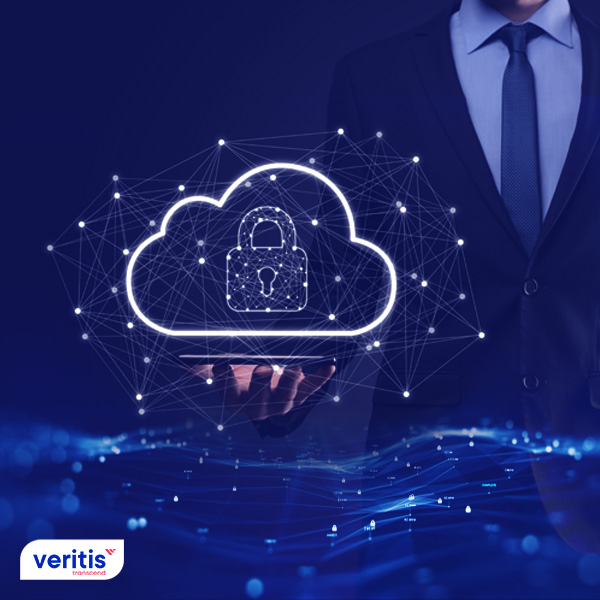Data Security in Cloud Computing: What You Need to Know

Data security in the age of cloud computing has become an indispensable concern for businesses and individuals alike. As more organizations transition their data to the cloud, understanding the security implications, safeguards, and best practices becomes crucial. This blog post aims to shed light on what you need to know about data security in cloud computing, covering topics from basic concepts to advanced security measures, to ensure your data remains safe.
What is Cloud Computing?
Cloud computing refers to the delivery of computing services such as servers, storage, databases, networking, software, analytics, intelligence, and more over the internet (“the cloud”) to offer faster innovation, flexible resources, and economies of scale. Here’s a quick overview:
- Types of Cloud Computing Services: Infrastructure as a Service (IaaS), Platform as a Service (PaaS), and Software as a Service (SaaS).
- Benefits: Scalability, cost savings, flexibility, and the ability to innovate quickly.
- Challenges: Security, compliance, data control, and service-level agreement (SLA) management.
Understanding Data Security in the Cloud
Data security in the cloud involves protecting data from unauthorized access, use, disclosure, disruption, modification, or destruction. Here’s what you should understand:
- Shared Responsibility Model: In cloud computing, security responsibility is shared between the cloud provider and the customer. The provider secures the infrastructure, but the customer is responsible for securing their applications and data.
- Encryption: Data should be encrypted both when it’s at rest and in transit.
- Access Control: Implementing strict access control policies to ensure only authorized users can access the data.
- Regular Audits and Monitoring: Continuous monitoring for suspicious activities and regular security audits.
Common Threats in Cloud Computing
Cloud computing is not immune to threats; here are some common ones:
- Data Breaches: Unauthorized access to sensitive information.
- Data Loss: Accidental or intentional deletion, hardware failure, or data corruption.
- Insider Threats: Malicious or careless insiders can compromise security from within.
- Man-in-the-Middle Attacks: Interception of data during transit.
- Advanced Persistent Threats (APTs): Long-term stealth attacks aimed at stealing data or intellectual property.
Best Practices for Data Security in the Cloud
Implementing the right security practices can significantly enhance your cloud data security:
- Use Strong Encryption: Encrypt data at rest and in transit with robust encryption standards.
- Identity and Access Management (IAM): Utilize multi-factor authentication (MFA), role-based access controls, and regular updates to access policies.
- Data Backup and Recovery: Ensure data is backed up regularly and you have a disaster recovery plan in place.
- Security Audits and Compliance: Regularly audit your cloud environment to ensure compliance with industry standards like ISO 27001, SOC 2, or GDPR.
- Endpoint Security: Secure devices accessing the cloud with anti-malware and endpoint detection and response (EDR) tools.
🔒 Note: Cloud providers also offer security services like WAFs (Web Application Firewalls), DDoS protection, and intrusion detection systems.
Selecting the Right Cloud Provider
Choosing a cloud provider isn’t just about service; it’s also about security:
- Security Features: Look for providers with advanced security features like encryption, monitoring tools, and compliance certifications.
- Reputation and Trust: Consider providers with a good track record in terms of security breaches and data protection.
- Support and SLAs: Ensure the provider has strong customer support and clear SLAs regarding security incidents and downtime.
Future Trends in Cloud Security
As cloud technology evolves, so do the security measures:
- Zero Trust Security: Assume breach and verify each transaction as if it originates from an untrusted source.
- AI and Machine Learning: Used for threat detection, anomaly detection, and automating security responses.
- Quantum Computing: With the advent of quantum computing, post-quantum encryption will be crucial for long-term security.
- Blockchain for Security: Enhancing data integrity and reducing vulnerabilities through distributed ledger technology.
In summary, while cloud computing offers immense benefits, its security landscape is complex. Ensuring data security involves a comprehensive approach combining provider security features, your organization's security policies, and staying abreast with evolving threats and technologies. By embracing these security measures, organizations can confidently leverage cloud computing while maintaining robust data protection.
Is data in the cloud as secure as on-premise data?
+Cloud data can be as secure as on-premise data, provided that proper security measures like encryption, IAM, and regular audits are in place. However, the shared responsibility model means that some aspects of security are out of your direct control, which can introduce different risks.
What happens to my data if the cloud provider goes out of business?
+Cloud providers typically have a process for data return or migration to another service in such scenarios. Reviewing the contract and SLA can provide insights into what protections or services are available in these situations.
Can I control where my data is stored geographically?
+Many cloud providers offer options to choose the geographic location of data storage to comply with data sovereignty laws. Always check with your provider to ensure they can meet your compliance requirements.
How do I protect against insider threats in a cloud environment?
+To mitigate insider threats, implement strong access controls, monitor for anomalous behavior, perform regular security training, and enforce the principle of least privilege.
What role does encryption play in cloud security?
+Encryption is vital in cloud security as it ensures data confidentiality. Data should be encrypted both at rest to protect against unauthorized access and in transit to safeguard against interception by man-in-the-middle attacks.
Related Terms:
- Cloud data security best practices
- Network security in cloud computing
- Data storage in cloud computing
- cloud data security program directions
- ensure data security in cloud
- cloud security data protection encryption



